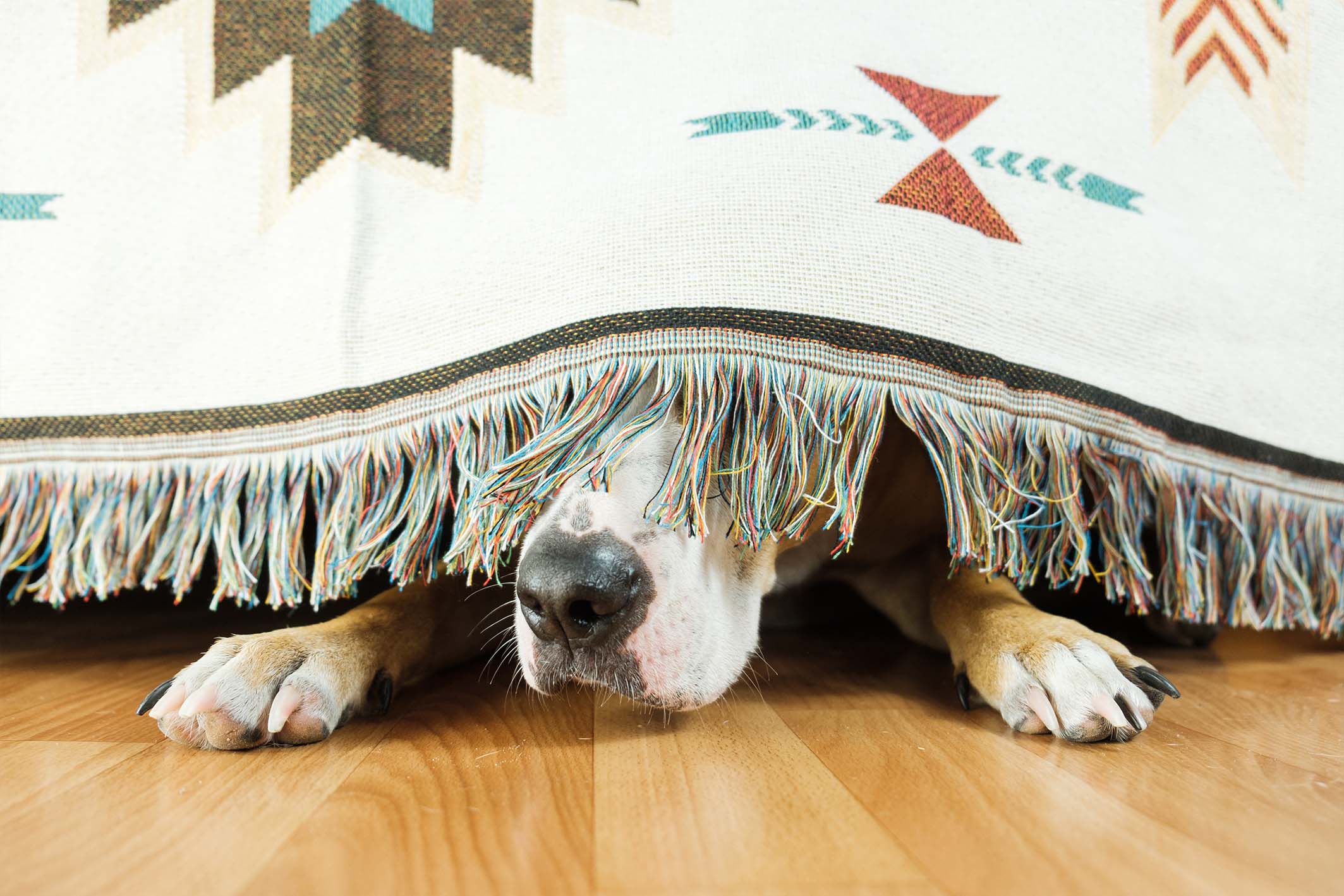Fear is an evolutionary response stemmed from a need to protect oneself from danger. Although both humans and dogs have significantly developed since their evolutionary beginnings, fear continues to stay with us as a universal emotion to helps us cope with stress. Dogs, just like humans, experience fear, but the communication differences between humans and dogs force fear to exhibit itself in different ways.
What Does a Scared Dog Look Like?
Look for the following signs that your dog may be scared or uncomfortable:
- They will lick their lips repeatedly
- They will stand in place with little movement
- Their tail will be completely straight and unmoving or tucked under her body.
- Their ears are usually back flat
- Their eyes are usually looking around
If your dog is scared, they may not exhibit every trait listed above. As an owner, it is important to learn about your dog’s patterns of nervousness and recognize these signs when your dog exhibits them.
How to Greet a Scared Dog?
Just because a dog is nervous does not mean that they need to stay isolated. However, when a dog is scared, it is important to approach them in a different manner than you would approach an excited or confident canine.
- Always let the dog come to the person. You want your dog to approach people on their terms. Never force your dog to go say hello to someone when your dog is uncomfortable.
- Have the person sit down next to the dog at their height and just offer up treats. You want the dog to associate happiness with the person they are meeting. Treats definitely do the trick!
- Don’t talk to the dog directly until they are more relaxed. Nervous dogs are processing a lot of emotions, and you do not want to overwhelm them.
- Don’t make sudden movements. Nervous dogs respond well to calm energy and predictable movements. Erratic behaviors (as they perceive it) may scare them.
- Let the dog take as much time as they need. Just like we need time when conquering fears, nervous and scared dogs are performing uncomfortable tasks when they meet new people. Give them time to adjust.
If Not Dominance, Then What is the Problem?
A significant portion of nervous dogs struggle with some form of anxiety. Anxiety is the major aggression problem in dogs and the one that owners should spend time working on with their pets. Some strategies for dealing with your dog’s anxiety include:
Behavioral training – creating a positive association when a dog would normally be uncomfortable. An example of this is giving dog treats when they meet a new person. They learn to associate new people and introduction with rewards.
Physical contact – touching your dog physically when they are uncomfortable. An example of this is touching your dog’s back when they are nervous to remind them that you are nearby.
Anxiety and nervousness in dogs are partially genetic, but they have also learned traits when not dealt with early in their life. Learn to recognize when your dog is scared and develop a proactive strategy for helping your dog conquer their fears. And as always, never be afraid to ask for help from a professional!





